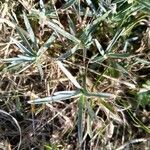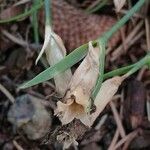A tufted plant which keeps growing from year to year. It grows 50-80 cm high and spreads 20-40 cm wide. The leaves are grey-blue and sheathed. The stems are wiry and spreading. The flower heads are upright. They have a strong smell. The flowers are pink.








